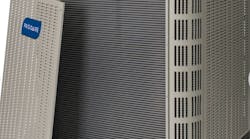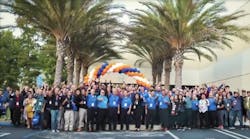You can't talk about refrigerant issues today without the issue of the phaseout of R-22 cropping up. But those of us who are concerned about the topic know that, to some degree, we've gone through phaseouts before.
Do your recall the phaseout of R-12? Here were some of the issues we had to deal with:
Replacement refrigerants — At one point, there were more than 15 replacements for R-12, none of which received approval from compressor manufacturers.
Lubricating oils — Mineral oil with CFCs, alkyl benzene oil with HCFC blends, and we all learned about polyolester oil with HFCs.
Excise taxes — We weren't sure how much to charge and who had to pay.
Venting — We weren't sure what could be vented and what had to be recovered. Speaking of recovered, we all learned about recovery machines.
Reclaim, recover or recycle — Again, new terms, new technology. To make matters worse, it seemed like legislation was coming at us from all angles, and we had absolutely no input on how to make things better.
Some of you may recall the turmoil in the refrigeration industry during the early '90s. That was when the Montreal Protocol took effect, and we received a barrage of information (or misinformation) regarding replacements for CFC refrigerants.
As it turned out, we made it through the conversion. In fact, the wholesalers that embraced the change did well.
The phaseout of R-22 should be easier, right?
The Refrigeration Council of HARDI thinks so. We've been focusing on this pending phaseout since the inception of HARDI. Johnnie Drury's (HARDI's first chairman of the Refrigeration Council) strong focus helped push the council to ensure that we had a good handle on the entire process, and we continue with his goal.
We put together and published a white paper to help determine the industry direction when looking for a replacement of choice for R-22 (which ultimately turned out to be R-410A). Now our focus has turned to ensuring there is enough R-22 available to service existing equipment going forward.
The EPA has published a paper entitled The U.S. Phaseout of HCFC: Projected Servicing Needs in the U.S. Air-Conditioning and Refrigeration Sector.
This hefty, 43-page report is available online at www.epa.gov/ozone/title6/phaseout/ServicingNeedsRevisedDraftReport_September.2006.pdf.
It is a study prepared by a nongovernment firm to help determine the availability of R22 in the future. The study looks at the availability of both virgin and reclaimed material to service the equipment that is out there today.
The Refrigeration Council intends to remain at the forefront of this and other refrigerant issues. For example, we were fortunate to have a well-known speaker from the EPA, Kirsten Cappel, at the last HARDI convention. Cappel was one of three industry members who sat on a panel at our council meeting. One of the best things to come out of our meeting was a call for comments to our members regarding the EPA R-22 study. To that end, the committee prepared a survey to send to our members for comments, which we will then forward to the EPA. If you need a copy of the survey, please call HARDI at 888/253-2128.
It is extremely important that we respond to this call for comments from the EPA, and we need to be sure that they hear feedback from the industry. Let's make sure that we are part of the solution this time around. Please take the time to fill out the survey.
If you have any comments or questions about the refrigerant issues, please feel free to contact me.
Frank Meier is president of Meier Supply Co. Contact him at 607/797-7700 or at [email protected].
Alternative Refrigerants and Its Impact on Suppliers
Editor's Note: It's always enlightening to see how those across the pond are dealing with the refrigerant issues. Here is a recent briefing by the consulting firm of Frost & Sullivan that examines the issue of alternative refrigerants in Europe.
European legislation's directive to phase out R-134a has increased the research toward alternative refrigerants which have global warming potential (GWP) <=150.
Initially, two refrigerants in R-744, commonly known as CO2 and H152a, were chosen. CO2 was adopted as the alternative refrigerant because H152a is a slightly inflammable refrigerant.
Most OEMs and suppliers have performed extensive research on CO2-based HVACR systems and are set for the EU deadline [for moving to alternative refrigerants] with the market launch expected in 2009.
However, the shift toward CO2-based refrigerant is expected to come at a high cost as it involves a considerable amount of re-engineering and design. For example, the operating pressure of CO2 is 10–12 times higher than that of R-134 and so the dimensions of the components and refrigerant lines have to be increased. This will result in additional cost because of the increase in material. For example, OEMs will have to incur additional costs because of the installation of aircon chargers.
Pressure from the OEMs toward the suppliers is high to reduce the costs. Suppliers are working toward offering cost-effective solutions to the OEMs.
One of the challenges the suppliers are facing is the serviceability of CO2-based HVACR systems. It will be necessary to provide adequate training and equipment to service stations once the CO2-based HVACR systems enter the market.
H Fluid is being put forward by some refrigerant suppliers as an alternative refrigerant in competition to the R-744 refrigerants. However, the toxicity testing takes a longer time, material compatibility is yet to be tested, and there is an expected increase in time to implement such a system on a large scale. As a result, implementation of such refrigerants is not possible within the deadline set by the European Union.
Visit Frost & Sullivan at www.frost.com for more information.
HCFC Phaseout Schedule
All developed (i.e., non-Article 5) countries that are parties to the Montreal Protocol are subject to a cap on their consumption of hydrochlorofluorocarbons (HCFCs).
Consumption is calculated by the following formula: consumption = production plus imports minus exports. The cap is set at 2.8 percent of that country's 1989 chlorofluorocarbon consumption + 100 percent of that country's 1989 HCFC consumption. (Quantities of chemicals measured under the cap are ODP-weighted, which means that each chemical's relative contribution to ozone depletion is taken into account.)
Under the Montreal Protocol, the U.S. and other developed nations are obligated to achieve a certain percentage of progress towards the total phaseout of HCFCs by certain dates. These nations use the cap as a baseline to measure their progress towards achieving these percentage goals.
The following table shows the U.S. schedule for phasing out its use of HCFCs in accordance with the terms of the Protocol. The Agency intends to meet the limits set under the Protocol by accelerating the phaseout of HCFC-141b, HCFC-142b and HCFC-22. These are the most damaging of the HCFCs. By eliminating these chemicals by the specified dates, the Agency believes that it will meet the requirements set by the Parties to the Protocol. The Agency is also committed to the phaseout of all HCFCs. The third and fourth columns of the table show how the U.S. will meet the international obligations described in the first two columns. The HCFCs to be phased out according to the schedule in the table below include HCFC-22, HCFC-123, HCFC-124, HCFC-133a, HCFC-141b, HCFC-142b, HCFC-225ca and HCFC-225cb.





